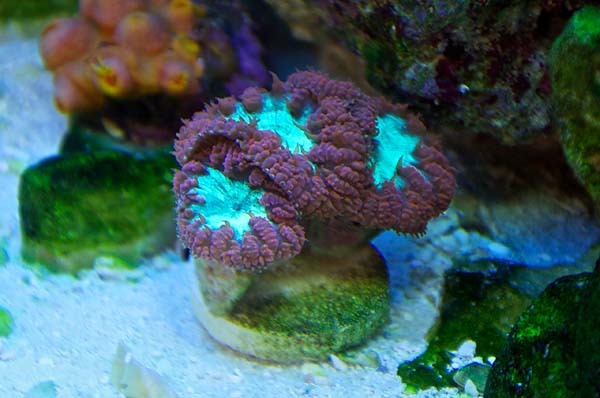I used to think that coral was the color of orange sherbet, but it's not It's made by mixing pink and orange. I must really like those two colors next to each other, because I found lots of examples around our place.
Like this orange Azalea next to the pink Bleeding Heart.
And this Lantana.
And one of the knobs I made for this little cabinet.
Then there's Betty Boop on my bookcase.
A pig rocking chair from Bellbe Creations.
And a ceramic bowl.
Now that I know what coral is, I pulled some of my coral fabric. I think I'll tone it down with other colors instead of putting all this into one project.
All that coral talk got me thinking about the other kind of coral, you know, the kind that lives in water.
| © NOAA used with permission of Creative Commons licensing |
There are thousands of
kinds of coral. Each kind has a different shape, but they fall into two
categories. Hard corals are rigid - they look like boulders, pillars,
elk horns, or brains. Soft corals sway - they look like fans, fingers,
flowers, lace, or feathers. Whether hard or soft, they all are animals made up of hundreds of tiny polyps, each the
size of a grain of rice.
| © Jim Maragos used with permission of Creative Commons licensing |
When a coral's polyps
die, they decay and leave behind layers of skeletons. New coral grows on top of the skeletons, and that's how reefs are formed.
| © Eric Danley used with permission of Creative Commons licensing |
Most corals are pale - the vibrant colors we see come from algae that lives inside them. When corals are stressed, they expel their algae and lose color. This is called coral bleaching. Without their algae, most corals die. Stress comes from pollution, rising ocean temperatures, overfishing, disease, and sedimentation.
| © David Burdick used with permission of Creative Commons licensing |
|
|
Coral reefs provide jobs and food for 500 million people and generate $375 billion annually in goods and services. Organisms in coral reef environments are used in the treatment of cancer, HIV, ulcers, and cardiovascular disease. Scientists believe that reefs are home to millions of undiscovered species, so it's not good that 25% of coral reefs have already disappeared and 2/3 are at risk. At this rate, 70% of them will be destroyed by the year 2050.

















No comments:
Post a Comment
Your comment won't display immediately.